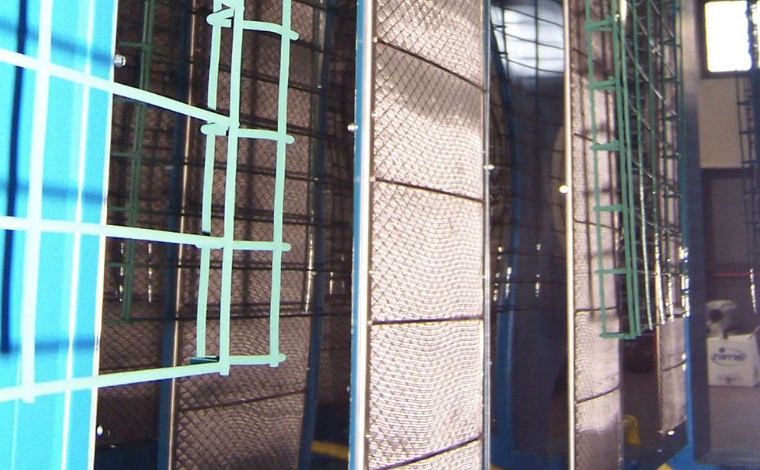In industrial environments where drying is a critical phase of the production cycle, energy consumption often represents one of the most significant operating costs. Whether you’re working in automotive, woodworking, textiles, or food processing, reducing thermal energy loss and optimizing performance are strategic priorities. One solution gaining popularity in recent years is the industrial catalytic gas heater—a technology that offers flame-free infrared heating with remarkable energy efficiency.
In this article, we explore how catalytic infrared gas heaters can significantly improve energy efficiency in drying processes, reduce operating costs, and increase production quality.
Why traditional drying methods fall short
Conventional drying systems—such as convection ovens or flame-based heaters—tend to rely on heating the ambient air to transfer energy to the material being dried. This approach leads to high levels of energy dispersion, long pre-heating times, and often inconsistent results across different product surfaces.
Key inefficiencies include:
- Slow heat transfer: Heating air takes longer to reach operational temperature.
- High thermal mass: Systems with large ovens or ducts take time and energy to reach and maintain desired temperatures.
- Heat loss: Open systems or poor insulation lead to heat escaping into the production environment.
- Non-targeted heating: Energy is spent on heating the entire air volume, not just the product surface.
By contrast, catalytic infrared technology offers direct, controlled, and energy-efficient heat transfer, optimizing the entire drying phase.
What is an industrial catalytic gas heater?
An industrial catalytic gas heater generates infrared energy through the catalytic oxidation of natural gas or LPG, without producing a flame. The catalytic process emits medium to longwave infrared radiation, which is absorbed directly by the surface of the material being treated.
This method allows the system to:
- Operate safely in ATEX environments (no open flame)
- Reach operational temperature in less than 10 minutes
- Deliver homogeneous heating across surfaces
- Reduce ambient temperature buildup
- Work with a wide temperature range (180°C to 650°C)
These features make catalytic gas heaters particularly effective in applications such as paint curing, powder coating, textile finishing, thermoforming, and wood drying.
Faster warm-up time = lower energy consumption
One of the biggest energy advantages of catalytic gas heaters is their ultra-fast warm-up time. Most Infragas panels, for example, require less than 10 minutes to reach full performance—compared to traditional ovens that may take 30–60 minutes.
Benefits include:
- Lower startup energy: Less energy is wasted during the preheating phase.
- Shorter production downtime: Faster startup means less idle time between shifts or cycles.
- Improved production flow: With less time lost waiting for equipment to reach optimal temperature, throughput increases without raising energy use.
This efficiency gain is especially relevant for manufacturers with frequent start-stop cycles or small batch production.
Targeted infrared heat = reduced thermal dispersion
Unlike hot air systems, which warm the surrounding air and rely on convection, catalytic infrared panels emit radiation that directly penetrates and heats the product surface. This allows for:
- Lower operating temperatures (with the same or better results)
- Elimination of air turbulence, which can affect surface quality
- Minimized heat loss to the environment
By heating only where it’s needed, catalytic systems drastically reduce energy waste and contribute to more consistent drying results.
This is particularly valuable in industries like woodworking (MDF, HDF), where surface uniformity and rapid moisture reduction are critical to avoiding defects such as warping or uneven coating absorption.
Space-saving and modular systems
Catalytic infrared heaters are compact and modular, meaning they can be installed close to the product surface, along conveyor lines, or within existing drying tunnels. Their small footprint and flame-free operation eliminate the need for bulky ventilation or insulation systems.
This setup leads to:
- Reduced heat dispersion over distance
- Improved integration into existing lines
- Lower investment in infrastructure
In many cases, production lines equipped with infrared catalytic heaters report energy savings of up to 40% compared to traditional drying systems.
Precise temperature control and product quality
Temperature uniformity and control are essential for drying consistency. Catalytic heaters allow precise regulation of temperature based on the process requirements, material type, or coating used.
This results in:
- Higher product quality: No overheating, bubbling, or cracking on painted or coated surfaces.
- Process repeatability: Each batch receives the same treatment parameters.
- Energy savings through accurate matching of heat output to product needs.
When integrated with automated systems or sensors, Infragas panels can even modulate their power in real time, adjusting output based on temperature feedback from the product surface.
Environmentally friendly operation
Sustainability is becoming a core value for modern manufacturing. The clean combustion process of industrial catalytic gas heaters produces no visible flame, no NOx, and extremely low CO emissions, making them compliant with strict environmental standards.
In addition, the optional use of catalytic VOC converters allows for safe oxidation of volatile organic compounds during coating or printing processes, without requiring high-temperature incineration systems.
By reducing both energy consumption and emissions, catalytic systems help companies move toward greener production models without compromising performance.
Unlocking smarter thermal processes
Investing in an industrial catalytic gas heater is not just about cutting costs—it’s about rethinking how thermal energy is delivered and used. From faster warm-up times to lower energy loss and improved drying consistency, catalytic infrared technology provides a high-performance alternative to outdated systems.
As industries face increasing pressure to optimize production, reduce carbon emissions, and control energy budgets, catalytic solutions offer a strategic path forward—especially in heat-intensive sectors like coatings, composites, and surface treatments.
When drying smarter means drying better, efficiency becomes more than just a number—it becomes a competitive advantage.





